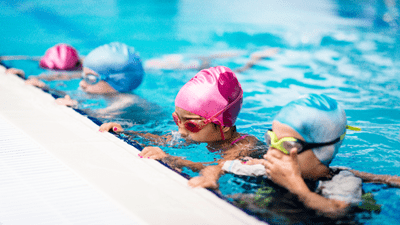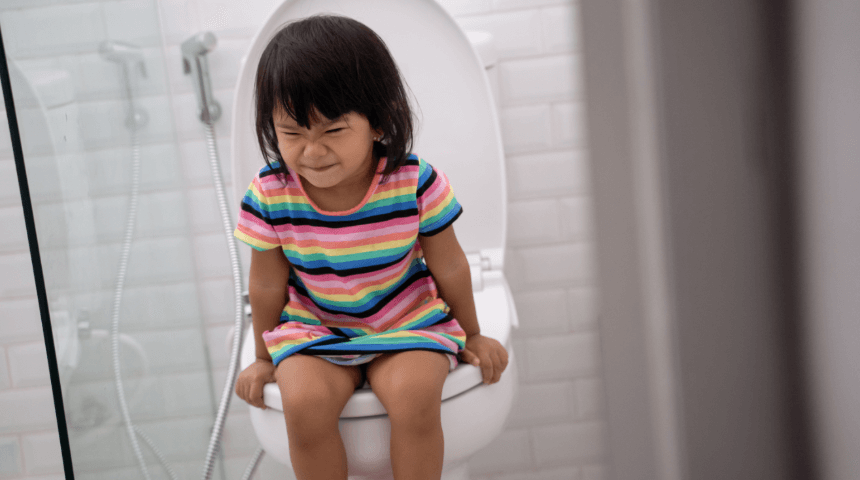What Is Swimmer’s Ear and How to Avoid It
Our kids likely will be splashing in the water all summer long. Whether they’re diving in the backyard swimming pool, braving the ocean waves, or frolicking at local splash pads, water activities are how we Floridians manage this intense heat (and, of course, have a little fun!). As your kids enjoy all of these water activities, though, you may wonder about swimmer’s ear. We hear people talk about it frequently, but is it something you should worry about?
Swimmer’s ear: An outer ear infection
Swimmer’s ear is a phrase that’s often used to describe an infection in the outer part of the ear. Your doctor would likely refer to it as otitis externa. This outer ear infection can cause ear pain, an itching sensation, a feeling of fullness in the ear, pus oozing from the ear or jaw pain. Symptoms usually set in quickly over a 48-hour period. Otitis externa is more common in warm, humid climates and with frequent exposure to water, such as in swimming.
Although it’s called swimmer’s ear, other things besides swimming can precipitate this type of infection. Earwax removal can cause trauma to the ear canal, and it can become infected. With its protective lubrication and antibacterial properties, earwax is good for the ear when present in normal amounts. Doctors don’t recommend that you clean your child’s ears (or your own) with cotton swabs. Other issues such as allergies, stress, skin conditions such as eczema or psoriasis, genetics, aggressive cleaning or wearing hearing aids may make it more likely for someone to develop this infection.
It’s important to understand, also, that all ear infections aren’t the same. The type of infection often seen in children after they’ve had a cold or runny nose is usually what’s known as otitis media. This is an infection in the middle part of the ear. Adults can get them, too, but usually not as frequently as kids. Infections also can occur in the innermost part of the ear, but these are uncommon.
Treatment of swimmer’s ear
If your child is diagnosed with swimmer’s ear, the doctor likely will prescribe antibacterial ear drops.
You may wonder, though, why this treatment differs from the medication your child would typically receive for otitis media, or middle-ear infection. When antibiotics are needed for otitis media, the infection is treated with systemic antibiotics (a pill or liquid given by mouth and distributed throughout the body via the bloodstream) because ear drops can’t reach the middle ear very well.
Topical ear drops can reach the outer ear well and are very effective at treating outer-ear infections. And as a bonus, these topical solutions don’t give your child the side effects that can come with oral antibiotics (diarrhea being one of the most common). Not only that, but the oral medications often are not effective against the type of bacteria that frequently causes swimmer’s ear.
Your doctor or pharmacist should show you how to administer these ear drops effectively, and you should keep the ears clean and dry during the time of treatment. Also, be sure your doctor is aware if your child has ear tubes (tympanostomy tubes), as this may affect which medication is prescribed.
Preventing swimmer’s ear
If your child is prone to swimmer’s ear, you can minimize the opportunity for infection by:
- Keeping ears clean and dry whenever possible.
- Avoiding cotton swabs to clean the ears.
- Thoroughly drying wet ears with a towel. You can shake water from the ears or use a hair dryer to help dry the ear canal.
- Placing over-the-counter rubbing alcohol (70 percent isopropyl alcohol) or a half-and-half mixture of rubbing alcohol and vinegar in the ear with an eye dropper after swimming.
- Using earplugs or bathing caps when swimming to keep water out. Make sure ears are clean and dry before use so water isn’t trapped inside the ear.
- Monitoring the water you allow your child to swim in. Public swimming areas or poorly maintained hot tubs may offer more opportunity for bacteria to thrive.
Incorporating these small changes into your water routine may help minimize the risk of swimmer’s ear and allow your child to safely enjoy the water all summer long.
Are You Interested in Learning More?
Sign up for our e-newsletter for more tips and best practices from pediatricians.
Sign Up Here










